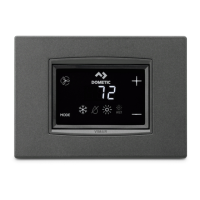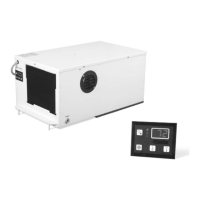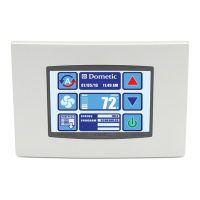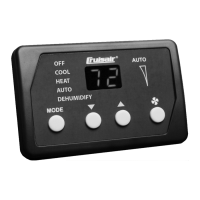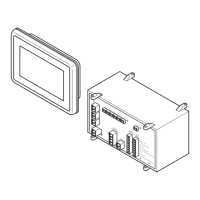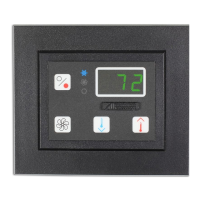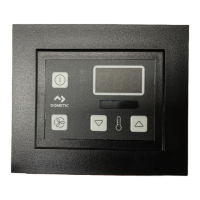28
EN
Troubleshooting Elite Control
Problem Possible Causes Recommended Solution
A high pressure
fault is present.
The seawater flow is obstructed. The
condenser coil may be too hot to touch.
• Water should be flowing strongly out of the overflow. Be sure the
seacock is open and water is flowing to the pump.
• Clean the seawater strainer.
• Check for obstructions at the speed scoop thru-hull inlet.
• Check for a strong, steady flow from the overboard discharge.
The high-pressure switch is open (in heating)
due to improper airflow.
• Remove any obstructions in the return-air stream.
• Clean the air filter and grille.
• Check for crushed or restricted ducting. The ducting must be as
straight, smooth, and as taut as possible.
• If the problem persists, reprogram the low fan speed limit for
maximum value.
• Set the low fan limit to 75, and set the reverse fan speeds during
HEAT mode by changing the reverse fan speed in Heat under general
settings, or manually set the fan speed to high.
The high-pressure switch is open (in heating)
due to a high seawater temperature.
The system may cycle on high-pressure if the seawater temperature is
above 55 °F (13 °C).
The high-pressure switch is defective or a wire
is loose.
• Contact a servicing dealer to test the high-pressure switch and to
ensure the wires are properly connected and seated in the orange
plug on the circuit board.
• Ensure the orange plug is not installed backwards on the circuit
board.
The seawater pump may be air-locked.
• Ensure that the seawater plumbing is installed according to the
guidelines in the Installation Manual included with the air conditioning
unit.
• Remove the hose from the pump discharge to purge air from the line.
The seawater pump is not running.
• Water should be strongly flowing out of the overflow .
• Ensure the pump is not damaged from being run dry.
• Check if the pump is receiving voltage.
• Check the pump circuit breaker or the relay board, if applicable.
A low-AC voltage
fault is present.
The supply voltage is too low.
Use a multimeter to verify that constant, steady power is available to the
unit.
The voltage is improperly calibrated, if
applicable.
• Use a multimeter to verify that the voltage reading to the unit matches
the voltage calibration in the parameters.
• Adjust the voltage calibration if necessary.
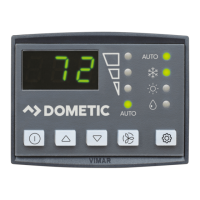
